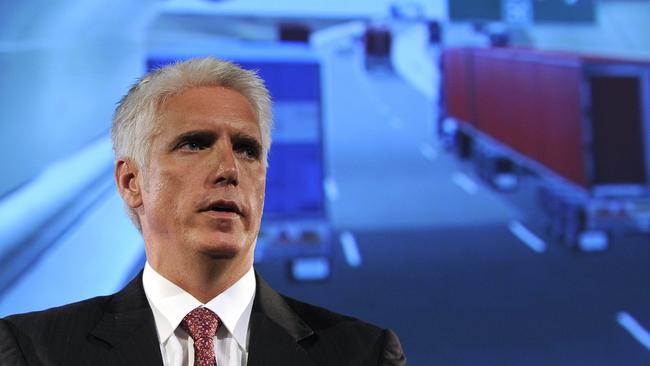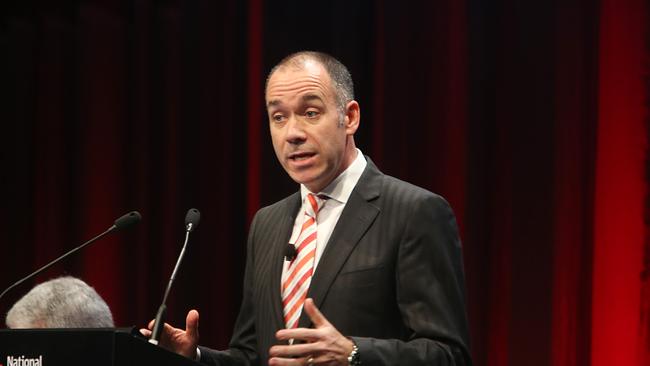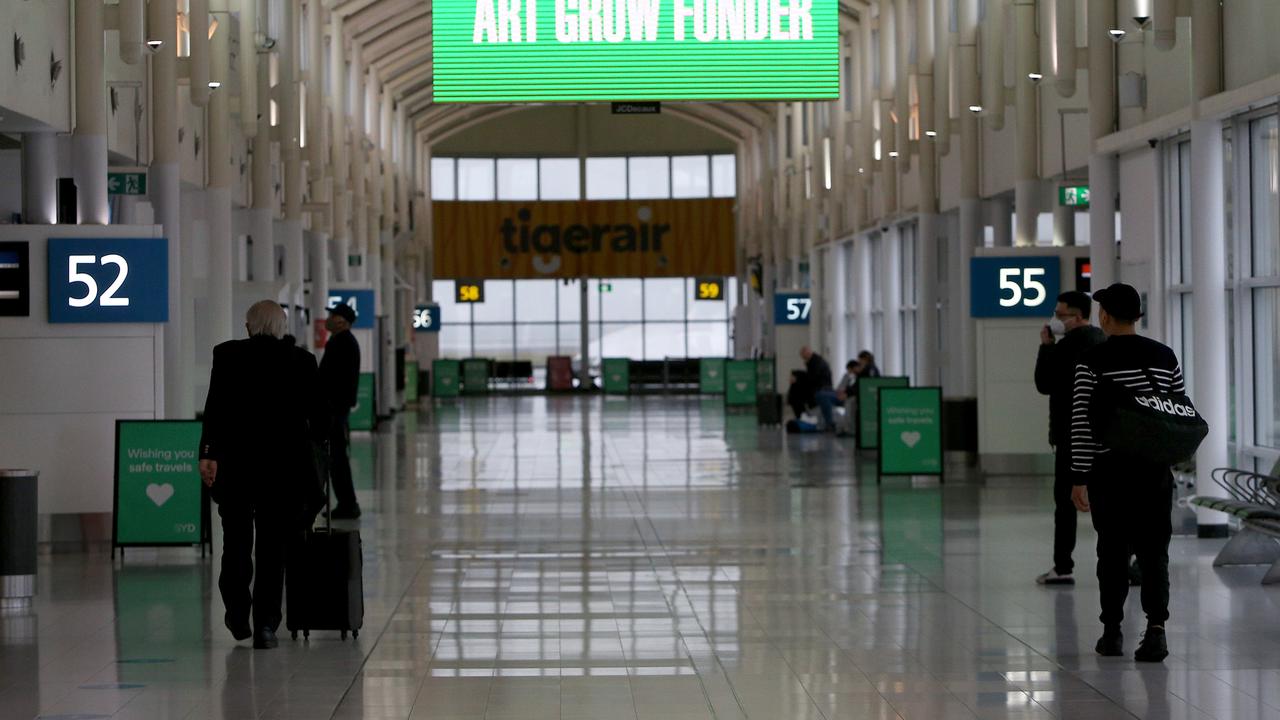Two roads to a growth future
NATIONAL Australia Bank’s road to a growth future starts by first getting smaller. Transurban’s road to its future is the exact opposite; it’s quite literally built on building more and bigger, well, roads.

Terry McCrann
Don't miss out on the headlines from Terry McCrann. Followed categories will be added to My News.
NATIONAL Australia Bank’s road to a growth future starts by first getting smaller. Transurban’s road to its future is the exact opposite; it’s quite literally built on building more and bigger, well, roads.
Their two futures, though, do coalesce in both coming home to Melbourne and, in NAB’s case, coming home to Australia more generally.
The very different pathways chosen by these two major Australian companies, and essentially both unveiled on Tuesday, are fascinating in their own individual contexts and histories, and obviously and more importantly, their futures.
Way back in the 1980s and early 1990s it seemed like a good idea at the NAB to buy small banks in Britain, Ireland (north and south) and the US.
NAB had emerged from the disastrous bank losses at the end of the 1980s as easily the strongest and most profitable of the Aussie big banks and wanted to get into global banking big time.
Indeed, by the new century, the ambition had got much grander. NAB toyed with the idea of buying or merging with a big British bank; it even hired one of the top British bank executives, John Stewart, as a potential “facilitator”.
It all came crashing down in the NAB’s forex scandal, which ended up costing the bank its CEO and not one but two chairmen; Stewart moved from London to Melbourne to be the “stabilising” CEO to get the bank back on firmer ground.
Then NAB — and everyone else — ran smack into the GFC; any remaining thought of getting bigger in Britain evaporated. All the British banks, big and small, were in deep trouble, NAB’s included; both board and management just wanted out.
Well, it’s taken a long time. Nobody’s wanted to buy so NAB had to “give” the bank to its own shareholders. It has also had to “leave” an extra $2.5 billion in Britain to cover any further hidden losses.
But the bottom line is that for the first time this century NAB not only has clear air — for both management and board, but it now also has the sort of tight operating focus that it really hasn’t had in decades.

Andrew Thorburn has been CEO for only a little more than a year; he obviously gets the credit for executing the British exit and doing so in the cleanest way that maximises — as best anyone could — value for shareholders. It’s also very shrewd for himself personally. He can now take the bank where he thinks it should go. He gets a running start on future performance by starting from a low base in terms of performance metrics, especially when measured inclusive of the awful British numbers but even excluding them.
Of course the opposite also applies. Judgment on his success — or not — starts right now; and there’s nowhere to hide.
He’s got exactly the bank which he has very publicly stated he wants. All the legacy issues have been disposed of; he’s off on his own.
It’s a very different story at Transurban. There have been no NAB-like disasters or (monumental) missteps; it’s been growth all the way and its CEO, Scott Charlton, has just executed a real future-cementing coup.
Melbourne’s CityLink was the first and always the biggest jewel in the Transurban crown of roads. It’s just got even bigger and more lustrous.
The first dollar of revenue for Transurban as a business came from CityLink just after the turn of the century; in its first six months Melbourne drivers paid all of $30 million to Transurban.
Last year that figure had grown to $557 million; by 2031 — the year in which the Monash and Tulla toll raids were supposed to revert to being freeways, Transurban will get close to $1.8 billion from CityLink.
After Tuesday’s all-but-done deal to build the Western Distributor, Transurban will now continue to get those tolls to at least the mid-2040s. By then they will add to over $3 billion a year.
They will even approach $4 billion a year if there are more deals like yesterday’s — as there almost certainly will be — to add more toll roads to the network and to expand capacity on existing roads.
Crucially, that would mean, just like on Tuesday, CityLink’s concession period would be extended out beyond 2050, so crucially, it would continue to pick up the — ever-rising toll revenues on ALL of its network and not just the new roads.
Transurban has evolved a very lucrative, very effective, quite unique four-tiered growth dynamic. It starts with actual traffic volumes increasing consistently at 3-4 per cent a year. Then the tolls increase by about 3 per cent a year under the price escalators.
Third comes the toll revenues from the increased traffic on not only the new or expanded roads, but also the way that traffic is fed into the rest of the network.
And fourth and most lucratively is the extended toll concession period.
You can see this escalating dynamic in its numbers.
Last year, CityLink traffic growth was 3 per cent, but toll revenue growth was 7.8 per cent — and EBITDA (gross profit) leapt by 11.3 per cent. The EBITDA margin, incidentally, was a very handy 93.2c in the revenue dollar.
Put it all together and by 2031 Transurban’s CityLink tolls will be close to $1.8 billion a year; by 2045, they will be over $3 billion year.
And that’s just Melbourne. Transurban is building exactly the same growth dynamic in Brisbane and Sydney.
Originally published as Two roads to a growth future


